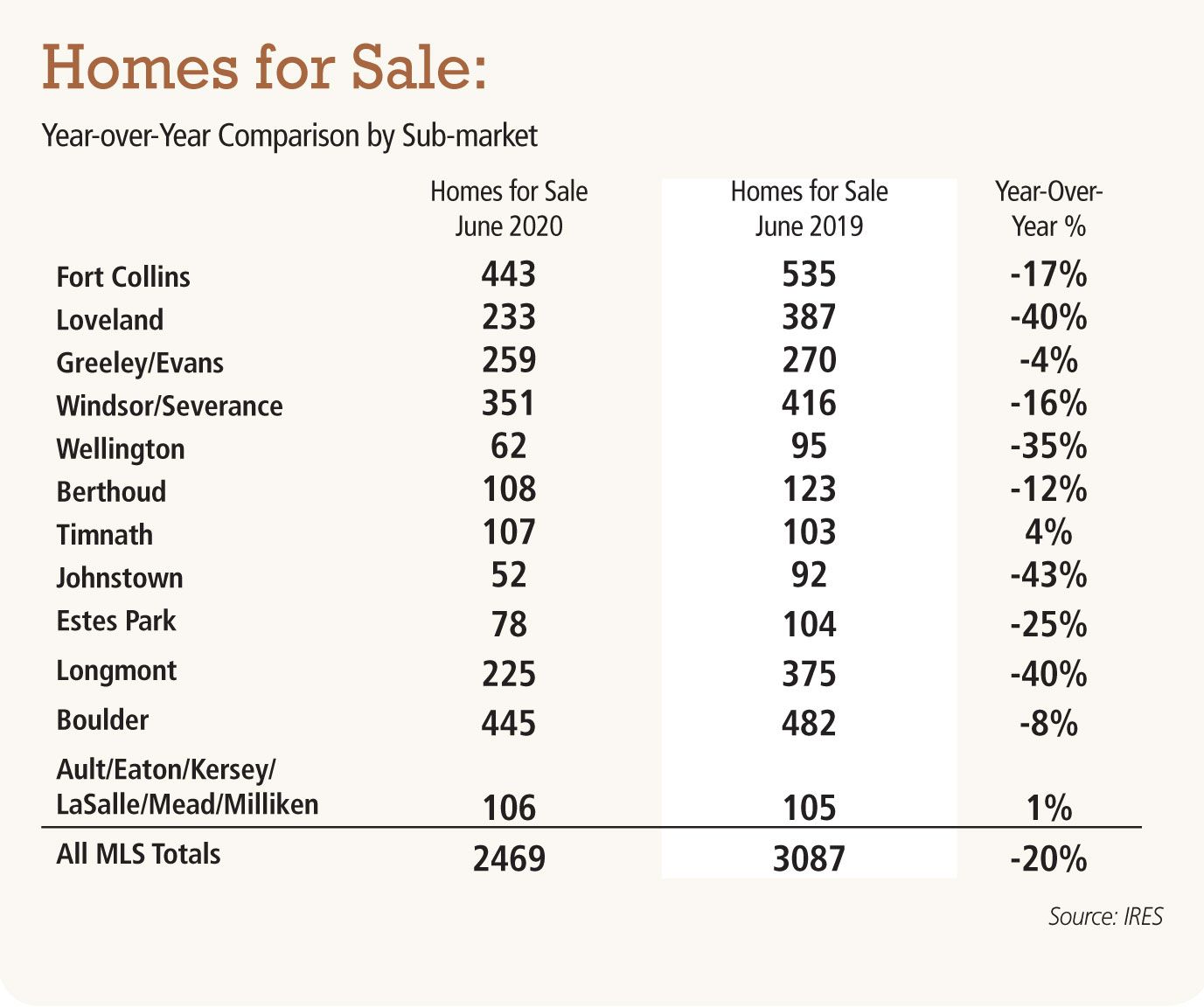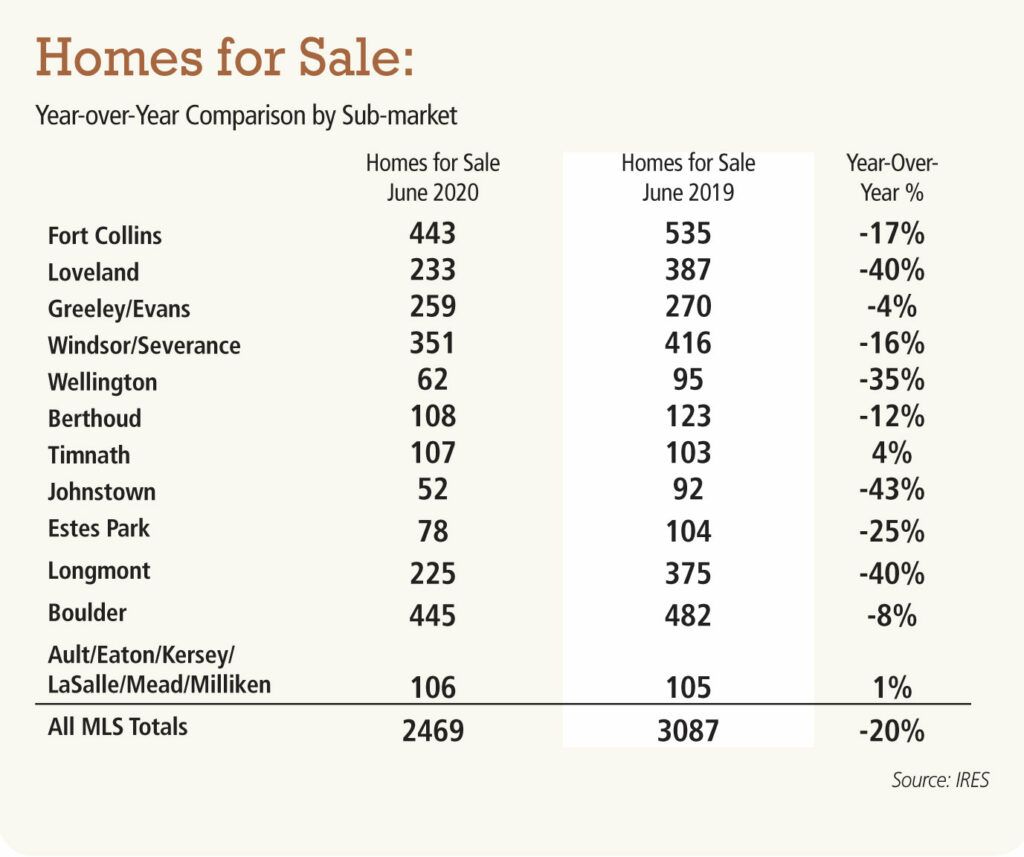Wells: Housing inventory remains lean — here’s why

 Northern Colorado’s housing market is feeling a squeeze. But not in the way you might be thinking.
Northern Colorado’s housing market is feeling a squeeze. But not in the way you might be thinking.
Housing inventory — the number of homes available for sale in our area — has been tight for a number of years, even as the appetite for housing has remained robust. Now, even under the cloud of the COVID-19 pandemic, the hunger for housing is still strong, due in part to record-low interest rates. Unfortunately, our inventory keeps shrinking.
Why is supply so lean? There are two forces at work. First: new construction. Even if it may seem that new neighborhoods are popping up all around you, homebuilders have not been able to keep up with demand. Second: resale of existing houses. Homeowners aren’t listing their properties for sale at the rate that we’ve seen in years past.
SPONSORED CONTENT
The combined effect means that total homes for sale in our region dropped by 20% between June 2019 and June 2020, or 618 fewer properties on the market. Locally, the communities that are experiencing the tightest supply issues are Loveland and Johnstown — both down 40% in total homes for sale over the 12-month period. Meanwhile, the Greeley-Evans area is bearing up the best among the larger communities, with homes for sale down just 4% (See the accompanying chart for a closer look at Northern Colorado sub-markets).
The inventory squeeze is not just a Northern Colorado trend. Nationally, inventory decreased 27.4% from June 2019 to June 2020, or a loss of 363,000 listings, according to Realtor.com. That’s even a steeper drop than in May, when inventory fell by 19.9%.
New listings — homes put up for sale in the last 30 days — are also down sharply. Nationally, new listings in June 2020 fell 19.3% from June 2019. Across Colorado, listings in June were down 39%.
On the positive side, June listings around the country reflected an improvement from April and May. New listings were down 44.1% in April 2020 from April 2019, and down 29.4% in May. However, that improvement seems to be leveling off. For the six-week period ending on June 27, the weekly rate of decline has not changed much, with each week posting year-over-year declines in the range of 17 to 23%. Bottom line – the pipeline for available inventory is apparently sluggish, despite the obvious demand.
So, what do the coming weeks and months hold in store?
For now, low inventory and historic interest rates — rates for 30-year mortgages fell below 3% in early July for the first time in history — are driving the housing economy forward, regardless of the current employment or COVID-19 challenges. In fact, pending home sales surged by 44% in May, according to the National Association of Realtors.
Longer term, we’ll find out how, or if, the employment crisis will alter current housing conditions. We have always preached that employment historically represents a 12-to-18-month leading indicator for the health of both the region’s and the nation’s real estate markets. Even as the economy has continued to add jobs as we open back up, there are looming concerns. If we see a slowdown in employment recovery, the housing demand we’re seeing now could slow down.
Will we be able to get a handle on some of the employment issues nationally and get unemployed workers back to work, or will the housing market feel the impacts of growing COVID-19 cases and more employment uncertainty?
Longer term, we’ll find out how, or if, the employment crisis will alter current housing conditions. We have always preached that employment historically represents a 12-to-18-month leading indicator for the health of both the region’s and the nation’s real estate markets. Even as the economy has continued to add jobs as we open back up, there are many who still are concerned about the remaining future impact of COVID-19 on employment and the continued emerging economy. Our outlook is one of continued optimism that has been reflected in consumer confidence throughout this pandemic, as people have prioritized decisions about their housing needs and where they call home in an evolving global landscape.
Brandon Wells is president of The Group Inc. Real Estate, founded in Fort Collins in 1976 with six locations in Northern Colorado
 Northern Colorado’s housing market is feeling a squeeze. But not in the way you might be thinking.
Northern Colorado’s housing market is feeling a squeeze. But not in the way you might be thinking.
Housing inventory — the number of homes available for sale in our area — has been tight for a number of years, even as the appetite for housing has remained robust. Now, even under the cloud of the COVID-19 pandemic, the hunger for housing is still strong, due in part to record-low interest rates. Unfortunately, our inventory keeps shrinking.
Why is supply so lean? There are two forces at work. First:…




